Composting is one of the most important things you can do to help the environment. Not only does composting reduce the amount of waste going to landfills, but it also helps to improve soil quality and encourage healthy plant growth. Grass clippings compost fertilizer is a great way to fertilize your container, indoor, or backyard garden plants. This homemade recipe is easy to follow and can be made in a small or large container. Composting digests organic materials and turns them into humus, an excellent fertilizer for your plants.
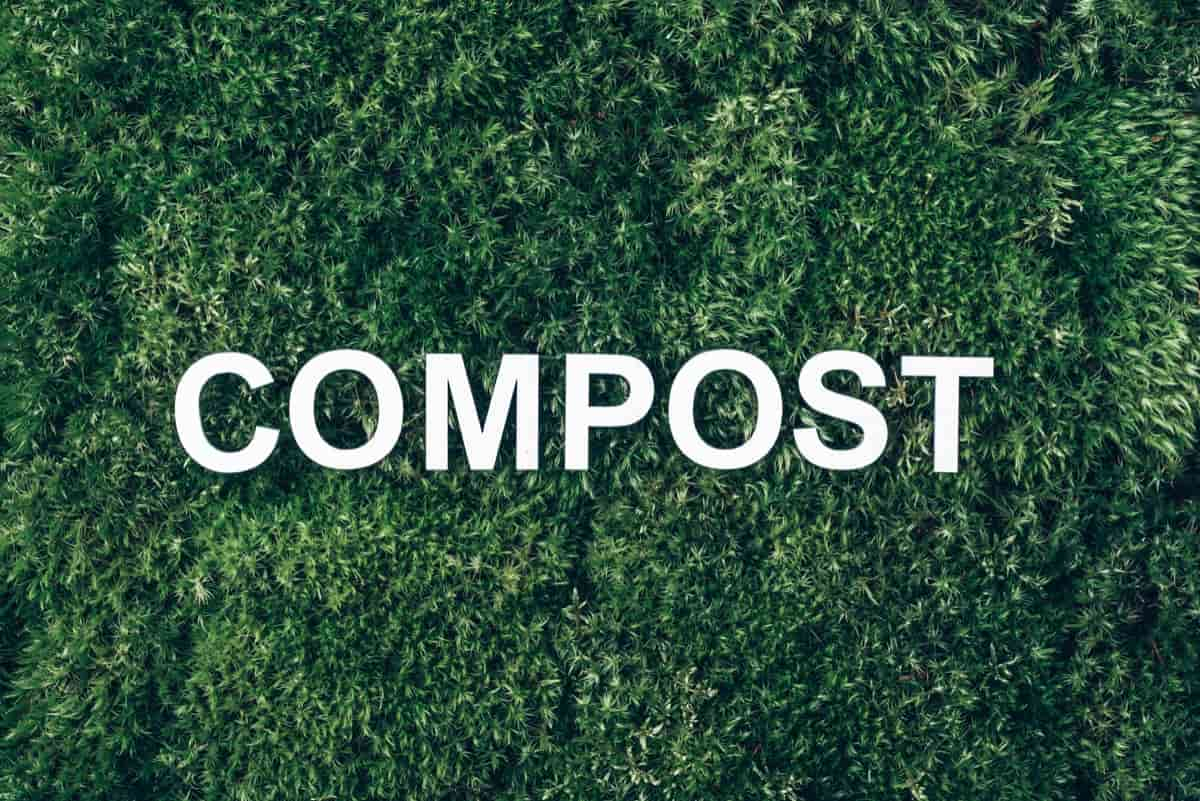
How to Make Grass Clippings Compost Fertilizer
Benefits of Grass Clippings Compost
Composting is a great way to recycle materials and create valuable compost. Grass clipping compost is a high-quality product that can be used in gardens and landscaping. Compost from grass clipping is rich in nutrients, including nitrogen, potassium, and phosphorus. Composting grass clippings helps to improve the overall health of your soil and plants. It’s easy to compost grass clippings. Just place the clippings in a large pile and add water until the mixture feels damp but not wet. Grass clippings are also used to control weeds.
Tips to Make Grass Clippings Compost Fertilizer
Making grass clippings compost fertilizer is a great way to recycle materials and help improve the soil of your indoor and backyard garden plants. There are many ways to make compost from grass clippings. You can make a simple batch in a container on your kitchen counter or make a bigger batch in the backyard using a garden tiller or spreader.
In case you missed it: How to Improve Your Clay Soil Organically: By Compost, Mulch, and Cover Crop
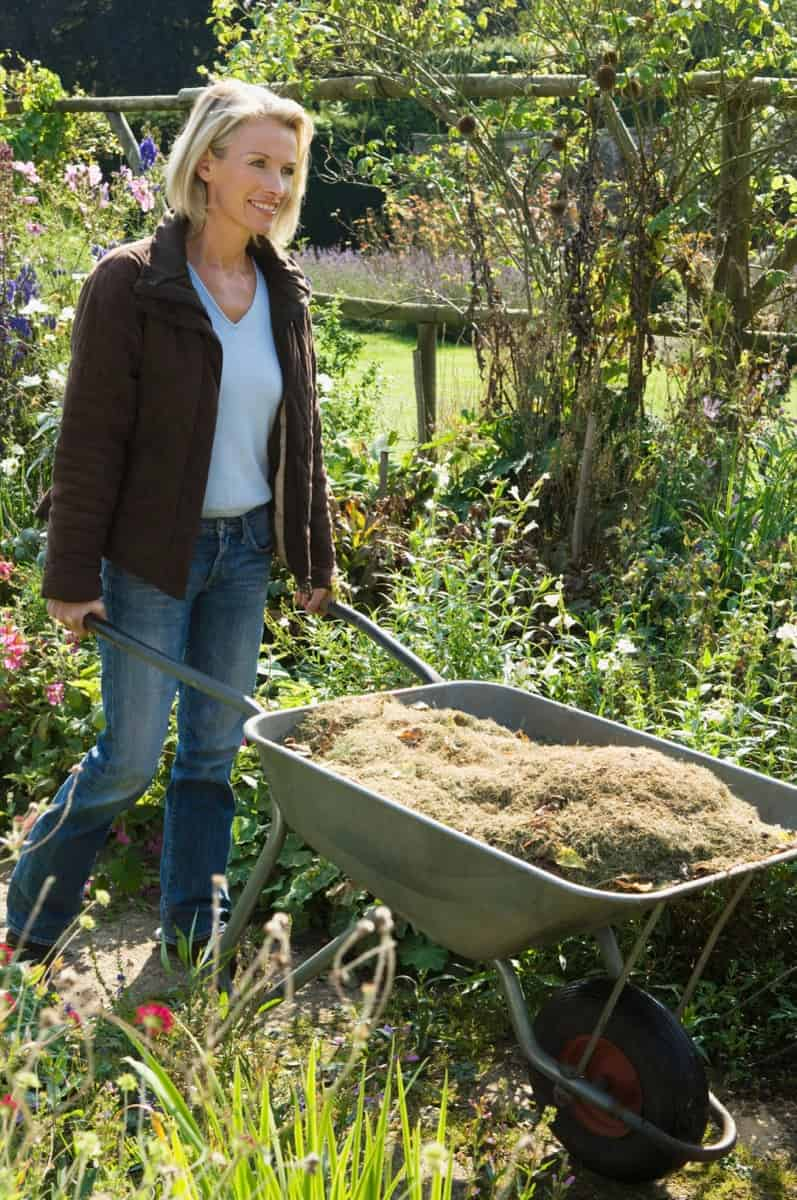
Cut the grass into small pieces with a lawn mower or hand scythe. Try not to leave large pieces of stem or leaves behind. Add the grass clippings to a large container. Try not to pack them too tightly, as this will prevent decomposition. If the compost mixture is too wet, add more dry organic matter, like leaves, straw, or shredded newspapers, until the desired consistency is reached. You should cover it with plastic wrap and let it sit for two weeks in warm or six weeks in cooler weather.
After two weeks, turn the mixture over and add fresh organic matter as needed until it reaches your desired consistency. This will depend on how moist you want the final product to be; if you prefer it drier, add more dry organic matter. Set aside again for six weeks to allow further decomposition. You can now use this compost fertilizer for your indoor and outdoor plants. When the compost is ready, it will have a rich brown color and an earthy smell.
Tips for Using Grass Clippings Compost Fertilizer
Grass clippings compost is an excellent soil amendment that can help improve the health of your garden, lawn, or landscaping. It is composed of decomposed plant materials and can be used in place of regular compost when fertilizing plants. Mulch around plants with fresh grass clippings after fertilizing to help retain moisture and prevent weed growth. Make sure the compost is fully cured before using it.
Curing the compost will make it less likely to cause damage to plants when applied. To cure the compost, spread it out in a thin layer on a flat surface and let it sit for three weeks. Apply compost only when there is adequate moisture present. Applying too much compost can cause it to spoil and harm plants. To determine if enough moisture is present, mix a little of the compost with water and see if it forms a soft dough.
In case you missed it: How to Make Compost Tea for Your Garden: Benefits to the Plants and Application Methods
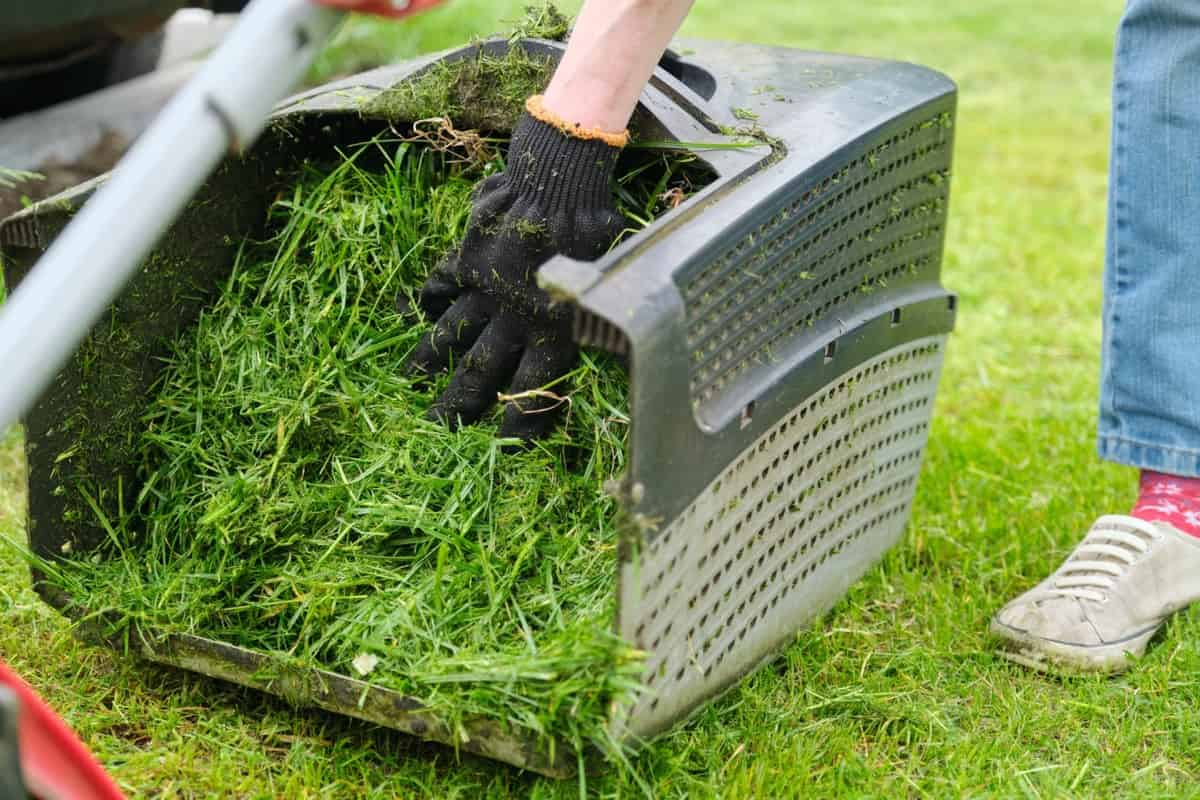
If the mixture doesn’t form a soft dough, add more water until the mixture does. Keep direct sun and wind away from newly applied compost so it can decompose properly. To use grass clippings fertilizer, mix 1 cup of grass clippings with 3 cups of water in a spray bottle. To apply the fertilizer, mist the lawn or garden plants with the solution several times per week.
Other Ways to Use Grass Clippings in Your Garden
Top Dress Raised Beds
Grass clippings add nitrogen and other nutrients to your garden and can be used in many different ways. The most popular ways to use grass clippings are in raised beds. Raised beds allow for better airflow and moisture retention, which helps plants grow larger and healthier. Grass clippings can also help sustain soil fertility and help reduce weed growth.
Leave Clippings on the Lawn
There are many creative ways to use grass clippings in your garden. One way is to mix them with compost and spread them around the plants as a fertilizer. By adding them to your compost pile, you can also make compost out of grass clippings. Finally, you can dry the grass clippings and use them as mulch around plants or on the ground.
In case you missed it: 14 Best Compost Bins for Home in India: For Indoor, Outdoor, and Kitchen Garden
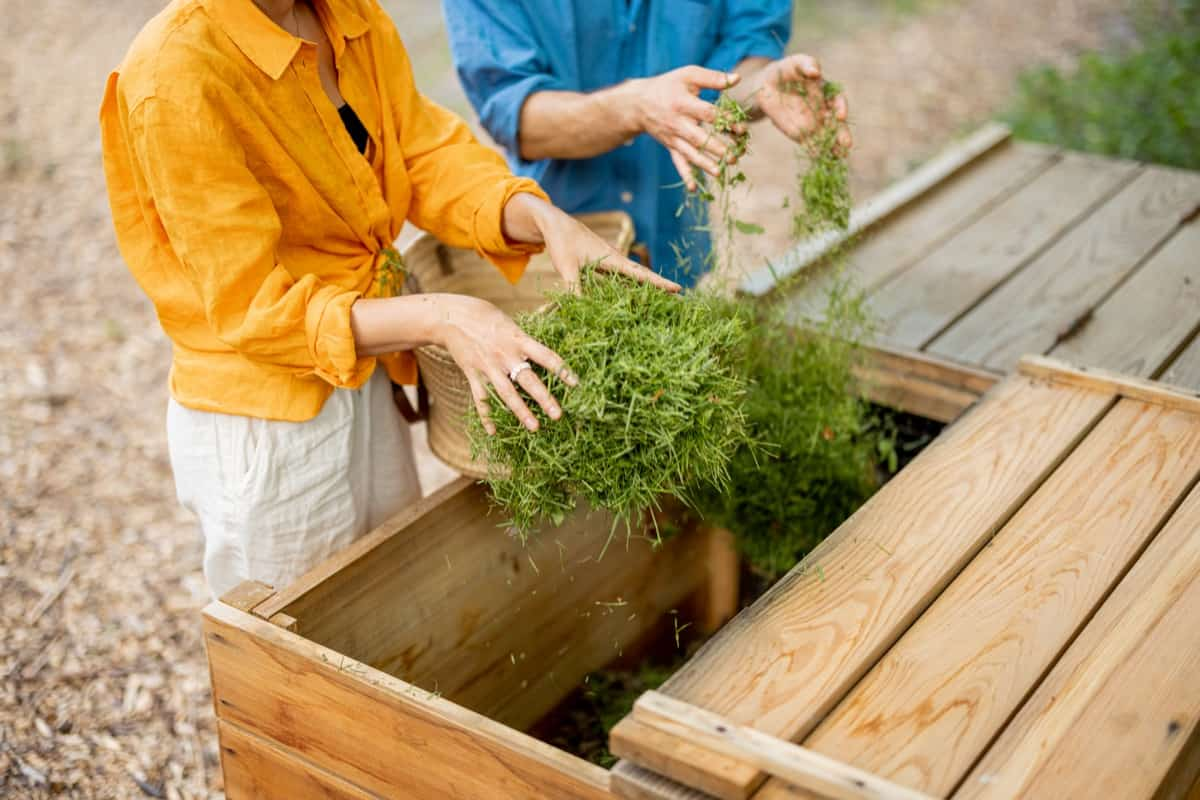
Make Liquid Lawn Clipping Fertilizer
Liquid lawn clipping fertilizer is a great way to get your yard going in the right direction. It is easy to make, and you can use it for any garden. You need some water, lawn clippings, and a fertilizer additive. To make liquid lawn clipping fertilizer, put 1 cup of water into a small container. Add enough lawn clippings to make a thick mixture.
Pour the mixture into a second container and add the desired fertilizer additive. Stir well to combine. Use liquid lawn clipping fertilizer when starting your garden or to boost soil fertility. It is also a good way to eliminate excess grass on your property.
Tips to Compost Grass Clippings Faster
Add Finished Compost, Animal Manure, or Topsoil to Your Compost Pile
Composting is the best way to reduce waste and help recycle materials. Adding finished compost, animal manure, or topsoil to your compost pile help speed up the decomposition process. This helps create rich and productive soil for plants. Finished compost is made of organic matter that has been broken down into small pieces.
Animal manure is made of animal carcasses processed into natural fertilizers. Topsoil is made of decomposed earth and used as a source of plant nutrients. To make finished compost, mix equal parts organic material (like leaves, clippings from fruits and vegetables, etc.) and water in a large container. If you are using animal manure, add it to the mixture gradually so that it absorbs well.
Ripen the material in the container by turning it in every few days or weeks. After two or three months, the material will be ready to use as a composting mix. To make topsoil, mix equal parts organic material (like leaves, clippings from fruits and vegetables,) sand, and water in a large container. Ripen the material in the container by turning it in every few days or weeks. After two or three months, the material will be ready to use as topsoil.
In case you missed it: How to Make Rabbit Manure Compost: A Step-by-Step Guide to Using in Your Garden
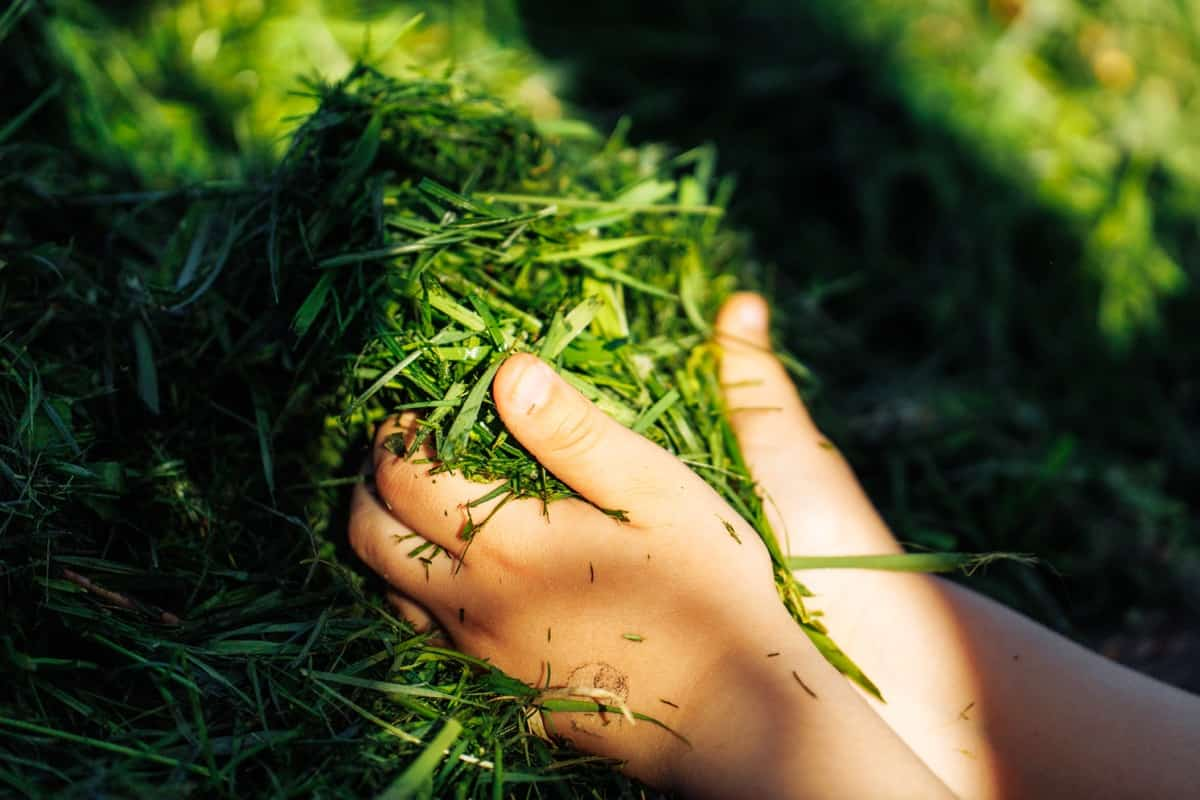
Keep Your Compost Pile Moist
The most important part of composting grass clippings is keeping the pile moist. You can do this by adding water or a dilute solution of manure or compost tea to the pile regularly. Too much moisture will create an unfavorable environment for bacteria and fungi, leading to less productive compost.
Aerate Your Compost Pile by Turning It
Composting grass clippings is the best way to reduce the amount of waste you produce and help improve your soil. You can aerate your compost pile by turning it every two weeks or so to help promote microbial activity. In the composting process, organic material turns into nutrient-rich soil. Turning the compost pile helps to speed up the process by mixing the materials and exposing them to air. Aerating your compost will also help to break down the material more quickly, promoting a higher level of decomposition.
How Much Time Does It Take to Compost Grass Clippings?
It typically takes about two weeks for most people to compost grass clippings. However, the time will change based on several factors, like the size and composition of the grass clippings. Composting involves breaking down organic matter into soil and humus, essential for healthy plant growth.
What are the materials that can be added to compost?
Many different compostable materials can be added to a compost pile, depending on the location and climate of the area where it will be used. The materials added to compost vary depending on your composting bin and your local climate. Most materials can be added to compost, including leaves, grasses, straws, wood chips, and shredded paper.
Adding more organic material will result in a richer compost pile while adding more inorganic material will make the compost harder. For example, adding wood chips to a compost bin will result in a harder compost because the wood chips contain many small pieces that act as binding agents. Adding shredded paper to a compost bin will create a softer compost since the paper contains large pieces that can easily break down.
Food scraps are one of the most common types of compostable material. They contain high levels of nitrogen and potassium, which are essential for plant growth. Food scraps also contain other nutrients like carbon and magnesium that help create healthy soil conditions. Leaves are another common type of compostable material.
In case you missed it: How to Prepare the Soil for Cantaloupe Plants: Best Soil Mix, pH, and Compost
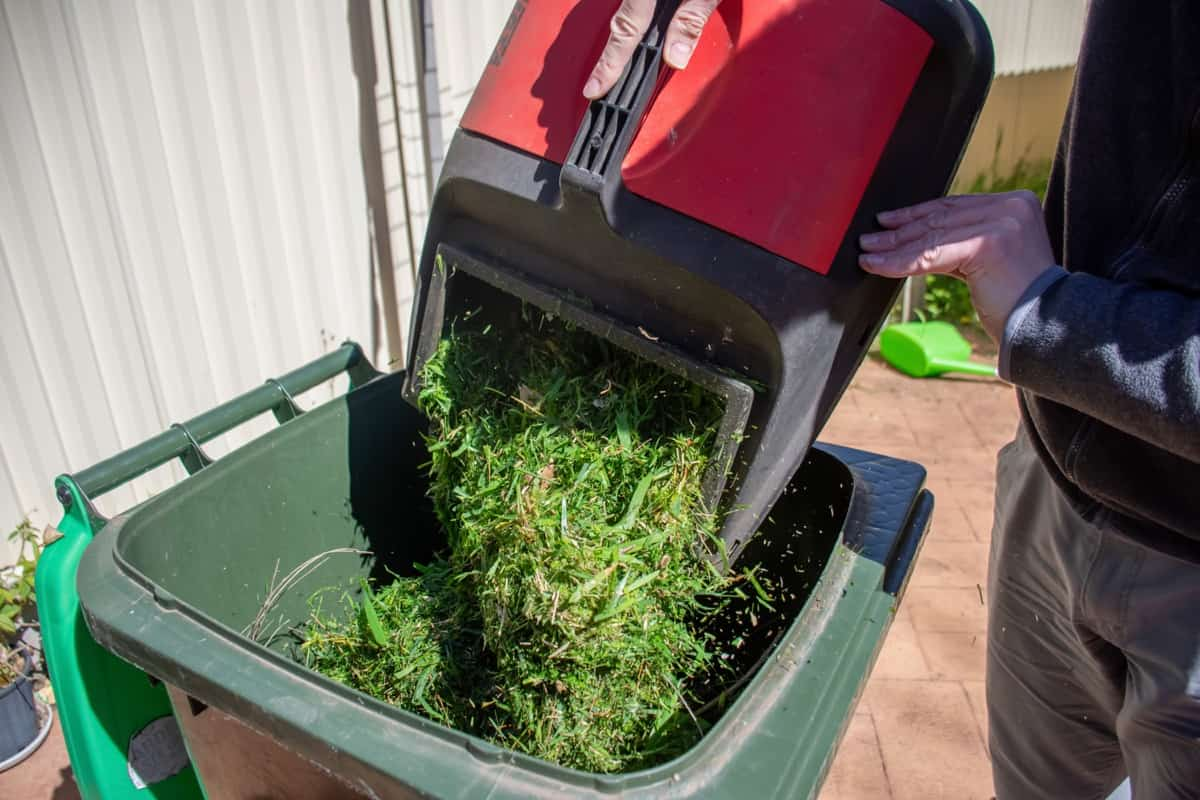
They contain high nitrogen, potassium, and other important nutrients plants need. Leaves also contain water, which helps them break down quickly in a compost pile. Newspaper is an unusual but valuable type of compostable material. Newspapers are made from recycled paper products, so they’re an environmentally friendly option for recycling materials. They also have low density, making them easy to move through a compost pile.
If a compost pile is too wet or too dry, adding materials can help to make the composting process work more effectively. When wet or dry, you can add materials to a compost pile, including leaves, straws, kitchen scraps, shredded paper, grass clippings, and branches. When adding these materials to the compost pile, mixing them well to cover them in the composting material is important.
If the compost pile is too dry, adding water can help to moisten the material and make it easier for the bacteria to work. If composting material contains mold, it is important to discard it immediately. Mold can produce a foul-smelling odor and can make composting dangerous. Other materials that can cause problems when added to compost include dry pet waste, plastics, and plastics with food residue.
In case you missed it: How to Prepare the Soil for Bamboo Plants: A Beginners Guide for Best Soil Mix, pH, and Compost

Conclusion
If you want to improve the soil in your garden and have a few grass clippings lying around, don’t throw them away; compost them. Composting is an excellent way to recycle materials, reduce waste, and improve the soil fertility of your garden or landscape. In addition, composting is an easy way to get started gardening and reducing your environmental impact. By composting grass clippings, you can help improve the quality of your soil, reduce waste disposal costs, and add valuable organic matter to your landscape or garden.
- How to Grow Tomatoes Organically at Home: A Comprehensive Guide
- Organic Gardening on a Budget: Low-Cost Methods and Materials
- Gongura Seed Germination and Planting Methods
- Cabbage Seed Germination and Selection
- Broccoli Seed Germination and Selection
- Asparagus Seed Germination and Variety Selection
- Seasonal Flower Gardening: Best Practices for Spring, Summer, Fall, and Winter
- How to Grow Hibiscus from Flower
- Plantation Ideas for Home Decoration: A Beginners Guide
- Flower Garden Designs and Layouts for Beginners
- Planting and Spacing Techniques in Papaya: A Beginner’s Guide
- Growing Gold: Essential Techniques for Planting Pineapples
- How to Make Kalanchoe Plant Bushy: Home Remedies and Solutions
- 11 Reasons Why Your Gardenia is Not Blooming: Home Remedies and Solutions
- Eco Elegance: The Guide to Designing a Drought-Tolerant Landscape
- Gardening on a Slope: Strategies for Hillside Landscaping
- Nourish and Flourish: Top Organic Mulches for Thriving House Plants
- Everything You Want to Know about Indian Mogra Flower: Discover Uses and Growing
- Green Thumb Success: Expert Tips for Cultivating Greenhouse Pumpkins All Year Round
- Maximize Growth & Flavor: The Ultimate Guide to Companion Planting in Herb Gardens
- How to Control Rhododendron Problems Naturally: Home Remedies and Organic Ways to Fix Them
- Natural Magic: The Remarkable Benefits of Cinnamon for Plants
- Best Steps to Revive Dying Tulip with Natural and Organic Treatment
- 10 Reasons Why Your Angel Trumpet is Not Blooming: Remedies and Treatment
- How to Fix Periwinkle Leaf and Flower-Related Problems: Natural Remedies and Solutions
- How to Fix Zinnias Leaf and Flower Problems: Discover Natural and Home Remedies
- Organic Steps to Induce Lemon Tree Flowers: A Comprehensive Guide
- Bloom Booster: Crafting the Perfect Homemade Bougainvillea Fertilizer
- Optimizing Growth: A Guide to Applying NPK Fertilizer for Potted Plants
- 10 Best Homemade Fertilizers for Rubber Plant: DIY Recipes and Application Method
- How to Boost Female Pumpkin Flowers: Effective Steps for More Flowers and High Yields
- Transform Your Indoor Garden: Top Benefits of Pink Salt for Houseplants
- 10 Best Homemade Fertilizers for Peacock Plants (Calathea): Easy DIY Guide
- Unlock Blooms: 9 Reasons Why Your Potted Chrysanthemum is Not Blooming
- 8 Reasons Why Your Potted Hibiscus is Not Blooming: Fix it with Simple Solutions
- Unlock Blooms: 9 Key Reasons Your Potted Frangipani Won’t Flower